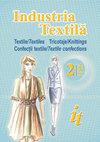葡萄籽涂层在抗菌棉织物中的应用
IF 0.9
4区 工程技术
Q3 MATERIALS SCIENCE, TEXTILES
引用次数: 0
摘要
微生物可以在纺织品表面快速繁殖。众所周知,尤其是在医院使用的纺织品表面会传播感染并构成危险。近年来,人们对获得环境友好、天然的植物抗菌材料和纺织品应用的兴趣日益浓厚,而不是合成和重金属应用。葡萄皮和葡萄籽富含多酚类化合物,是酿酒过程中的废物。对这类废物的评估非常重要。在本研究中,葡萄籽被许多研究认为具有抗菌活性,并将其应用于棉纺织材料的涂层法,以获得对织物的抗菌性能。根据ISO 105-C06标准进行的色牢度测试结果,没有观察到涂层工艺对织物的洗涤牢度有负面影响。所有涂层织物的耐洗牢度值为5。洗涤牢度测试的结果表明,涂层织物耐洗涤。作为根据TS ENISO 105-X12标准进行的摩擦牢度测试的结果,观察到涂层织物是耐摩擦的。作为根据TS EN ISO 13934-1标准进行的强度测试的结果,当检测涂层织物的断裂强度和断裂伸长率时,观察到涂层织物拉伸强度和断裂伸长增加。根据ATCC100抗菌试验方法,对处理后的织物进行了大肠杆菌和金黄色葡萄球菌的抗菌试验。它是通过涂层工艺获得的,覆盖率为60%。涂层工艺的结果是,对大肠杆菌获得了更好的效果。观察到抗菌性能随着涂布率的增加而提高。作为测试的结果,对这两种细菌都具有抗菌活性。在洗涤织物的抗菌试验中检测到可接受的抗菌活性水平。本文章由计算机程序翻译,如有差异,请以英文原文为准。
Application of grape seed coating for antibacterial cotton fabric
Microorganisms can reproduce rapidly on textile surfaces. It is known that textile surfaces used especially in hospitals
cause the spread of infections and pose a danger. In recent years, instead of synthetic and heavy metal applications,
the interest in obtaining environmentally friendly and natural plant-based antibacterial materials and textile applications
has been increasing day by day. Grape skins and seeds, rich in polyphenolic compounds, are waste products from
winemaking. The evaluation of such waste products is of great importance. In this study, grape seed, which is stated to
have antibacterial activity in many studies, was applied to cotton textile material with the coating method and it was
aimed to gain antibacterial properties to the fabric. As a result of the colour fastness tests performed according to the
ISO 105-C06 standard, it was not observed that the coating process had a negative effect on the washing fastness of
the fabrics. The wash fastness value of all coated fabrics is 5. As a result of the washing fastness test, it was seen that
the coated fabrics were resistant to washing. As a result of the friction fastness tests performed according to the TS EN
ISO 105-X12 standard, it was observed that the coated fabrics were resistant to friction. When the breaking strength and
breaking elongation values of the coated fabrics were examined as a result of the strength test performed according to
the TS EN ISO 13934-1 standard, it was observed that the tensile strength and elongation at break of the coated fabrics
increased. Antibacterial tests against E. coli and S. aureus bacteria were performed on treated fabrics according to the
AATCC 100 antibacterial test method. It is obtained as a result of the coating process for 60% coverage. As a result of
the coating process, better results were obtained against E.coli bacteria. It was observed that the antibacterial properties
improved as the coating rate increased. As a result of the tests, antibacterial activity was provided against both bacteria.
An acceptable level of antibacterial activity was detected in the antibacterial tests of the washed fabrics.
求助全文
通过发布文献求助,成功后即可免费获取论文全文。
去求助
来源期刊

Industria Textila
工程技术-材料科学:纺织
CiteScore
1.80
自引率
14.30%
发文量
81
审稿时长
3.5 months
期刊介绍:
Industria Textila journal is addressed to university and research specialists, to companies active in the textiles and clothing sector and to the related sectors users of textile products with a technical purpose.
 求助内容:
求助内容: 应助结果提醒方式:
应助结果提醒方式:


